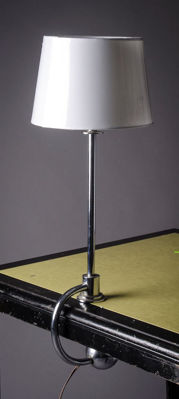William Lescaze
Lescaze is a Swiss-born American architect, and is one of the pioneers of modernism in American architecture. Lescaze was born Onex, Switzerland, and completed his formal education at the Eidgenössische Technische Hochschule Zürich in Zurich, receiving his degree in 1919, and emigrated to the USA in 1920. He worked for some time at the architectural firm of Hubbell & Benes in Cleveland, Ohio, before setting up his own practice in New York City in 1923. Through the 1920s and 1930s he continued to travel across the Atlantic. In 1929, Philadelphia architect George Howe invited Lescaze to form a partnership, which was named Howe & Lescaze. Within just a few weeks after joining forces, the duo began work on a large project for downtown Philadelphia. The resulting structure, completed in 1932, was the Philadelphia Savings Fund Society (PSFS) Building, which is today generally considered the first International Modernist skyscraper, and the first International Style building of wide significance in the United States. Lescaze is generally given credit for the design: letters from Howe to Lescaze quote the former insisting to the latter that "the design is definitely yours." The structure replaced the bank's former headquarters in Philadelphia, a classicist structure near Washington Square built in 1897. Lescaze submitted a design for the proposed Museum of Modern Art in New York, in 1932.[1] The wood and metal model was donated to the MOMA in 1994. His 1937 Alfred Loomis house in Tuxedo Park, NY is regarded as an early experiment in double-skin facade construction.[2] In 1939 he designed a futuristic "House for 2089" which included a helipad on the roof.[3] Lescaze was also the design lead for the 1937 Williamsburg Houses in Brooklyn, a pioneering 20-building modernist housing project modeled on European examples. He later taught industrial design at the Pratt Institute (1943-1945). Among his built works were the CBS West Coast studios Columbia Square on Sunset Boulevard. He died in New York, New York.
Sort by
Display per page
Title: Counterbalance Lamp
Artist: William Lescaze
Elegant table lamp designed by the Swiss-born American, more eminently known for his architectural work that helped birth modernism in America. His design here is a neat encompassing of the intelligent, often ingeniously experimental nature of production he sought — the sleek form of the lamp cut sharper by a removal of the base, and relying instead on a spherical metal counterbalance slung under the resting surface to remain upright. Nickel Silver over brass, single socket, paper shade


